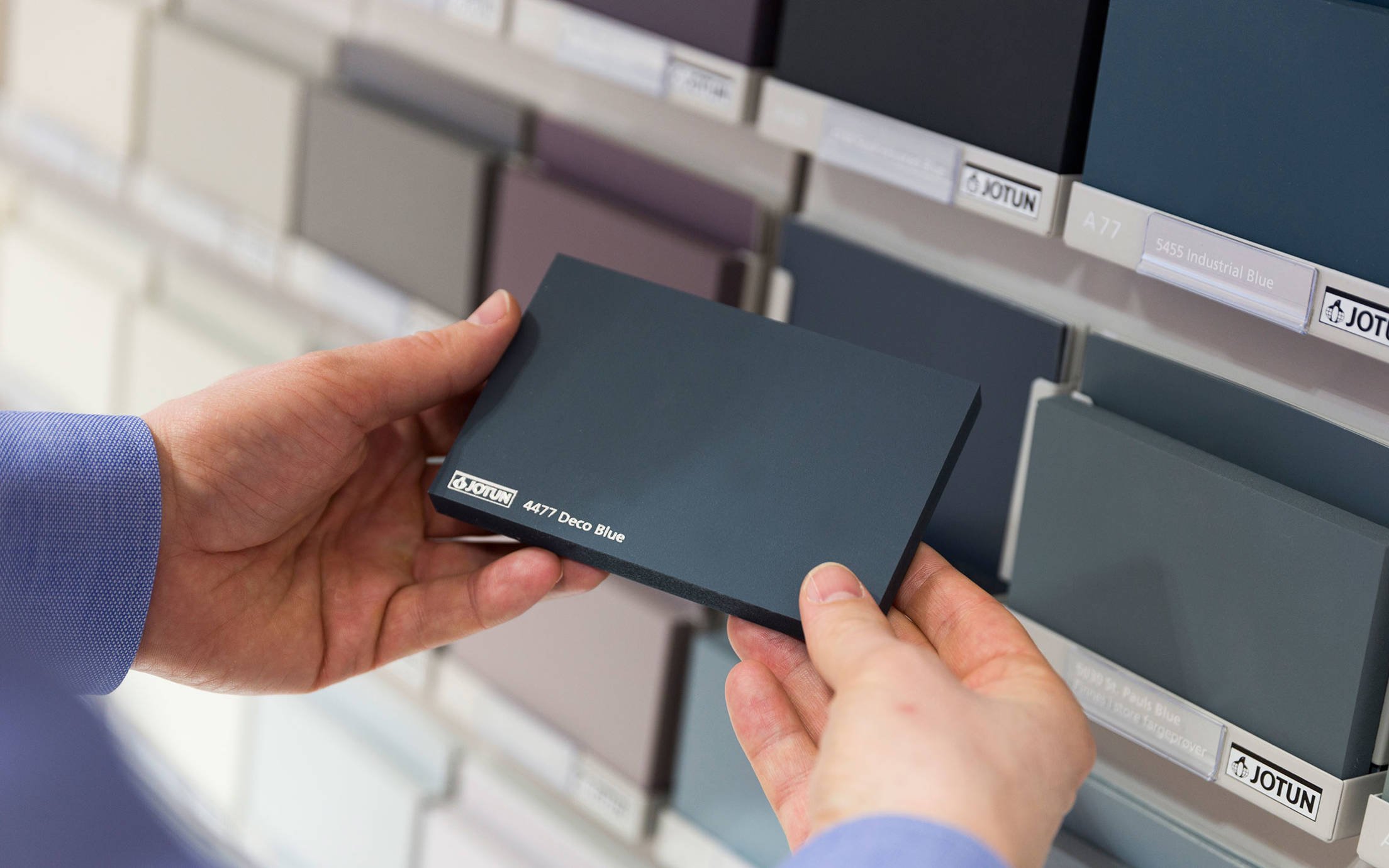
The Jotun Multicolor story
The development of the Jotun Multicolor Concept not only revolutionised how colours are produced, marketed and sold, it has helped Jotun become a market leader in many countries.

December 21, 2021
For a typical vessel in a typical trade, deterioration in hull and propeller performance is broadly estimated to account for 9 to 12 per cent of current world fleet GHG emissions. The source for this claim is the document “Air pollution and energy efficiency” presented under MEPC 63/4/8.
According to the IMO’s Fourth Greenhouse Gas Study (2020), shipping contributions to global anthropogenic GHG emissions have increased from 2.76 per cent in 2012 to 2.89 per cent in 2018. And with global temperatures rising, market pressures and regulatory developments are forcing the maritime industry to focus on energy efficiency.
New IMO rules, such the Energy Efficiency Design Index (EEDI) for newbuildings and the Energy Efficiency Existing Ship Index (EEXI) for ships in service, have created new compliance challenges for shipowners and operators. And with the EU’s plans to include shipping into its Emissions Trading Scheme (ETS), the pressure is on for shipping to act.
These (and other) international and regional regulations will require owners and operators to be more transparent about their emissions. For example, ships entering European ports will have to submit Monitoring, Reporting and Verification (MRV) of their CO2 emissions. At the same time, owners and operators will have to report CO2 emissions to comply with the IMO’s Carbon Intensity Indicator (CII), a rating scheme developed by the IMO to measure the annual emissions performance of all ships by 2023.
Unlike ship design requirements, the CII focuses on tracking emissions during operations.
Specifically, the CII creates a standard to measure how efficiently a ship transports goods or passengers calculated as how many grams of CO2 that are released per deadweight ton (dwt) carried one nautical mile at actual speed. The point is to have as low rating as possible
Based on collected data, the vessel is given an annual operational carbon intensity rating per dead weight tonne, ranging from A (low) to E (high). Vessels considered to have a high carbon intensity rating (D or E), must take corrective actions to improve performance, consistent with the IMO’s SEEMP (Ship Energy Efficiency Management Plan), now required for all vessels.
While some owners focus on new engine types and onboard technologies, many overlook what lies just below the waterline: Hull coatings. When micro-organisms attach to a hull surface, it creates drag, or speed loss, over time. To compensate for this drag, ships use more fuel, and thus emit more CO2. Therefore, a hull coating that can slow the accumulation of fouling over time can reduce fuel costs and corresponding emissions.
To help owners reduce fuel costs and comply with existing and pending emissions regulations, Jotun’s Hull Performance Solution (HPS) may be “low hanging fruit.” That is, all vessels need hull coatings anyway, so why not use a system to help “future proof” hulls against pending emissions regulations, especially those that are expected to tighten in the years ahead?
Jotun’s Hull Performance Solution (HPS) combines advanced silyl methacrylate antifouling (SeaQuantum X200), enhanced technical service and performance monitoring, based on data collected from onboard sensor data and other sources. Jotun’s ability to measure performance based on ISO 19030, a standard introduced in 2016 to measure changes in hull and propeller performance, is a useful reporting tool for owners and operators seeking to comply with both the EU’s MRV and the IMO’s CII.
Owners and operators who use HPS will also benefit from lower fuel costs, and because the Jotun’s solution slows the accumulation of fouling over time, it extends intervals between expensive dry-dockings. And as more cargo owners seek to charter vessels with good CII ratings, using HPS to measure and reduce emissions is a competitive advantage. Finally, owners and operators who can demonstrate superior performance may be in a better position to attract financing on more favourable terms.
Introduced to the market in 2011, Jotun’s HPS has been applied to more than 9,000 vessels, worldwide. While HPS was conceived and developed to help owners and operators reduce fuel costs and comply with existing and pending regulations, the solution has proven to be an effective tool to help the industry reduce emissions. In fact, a recent Jotun study, based on EU MRV data*, indicated that vessels using Jotun HPS reported a 20 per cent lower carbon intensity in operations compared to competing systems.
At Jotun, we recognize that advanced hull coatings alone cannot decarbonize shipping. But we believe that HPS, and our other anti-fouling products and services, play an important role in helping owners and operators improve performance and lower emission significantly over time.
*EU MRV (2018) regulations provides requirements for the monitoring, reporting and verfication of carbon dioxide (C02) from ships arriving at, within or departing from EU ports and/ or European Economic Area ports. The MRV regulations forms part of the European efforts to combat greenhouse gas emissions and applies to ships above 5000GT, regardless of flag.

The development of the Jotun Multicolor Concept not only revolutionised how colours are produced, marketed and sold, it has helped Jotun become a market leader in many countries.

Sometimes, taking big risks pays off. For Norunn Folsvik, trying something new sometimes means putting doubts aside.

Jotun has supported The International Red Cross and Red Crescent (ICRC) Movement for many years, providing support to disaster relief efforts through the Norwegian Red Cross.
A video is being shown
An image is being displayed
A brochure is being displayed